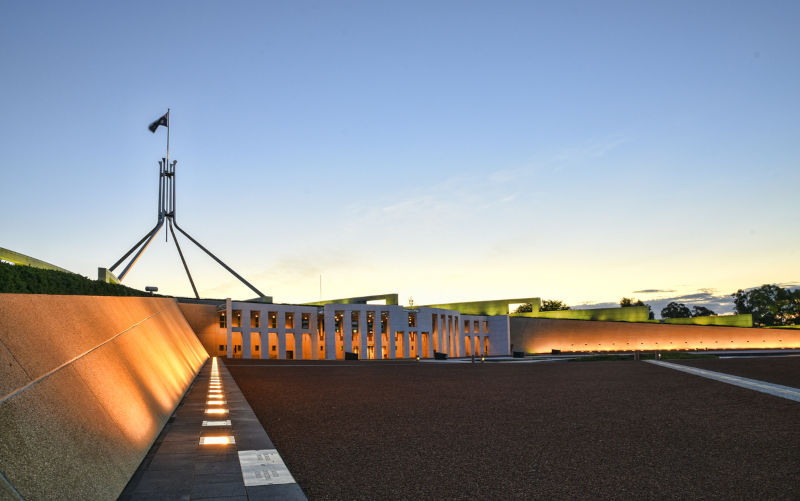Time for Labor to focus on those who are hurting
Nov 14, 2023
It was only in March this year that The Sydney Morning Herald claimed in a series called Red Alert that Australia “faces the real prospect of war with China within three years that could involve a direct attack on our mainland”. There were no grounds to believe this then and even fewer after Anthony Albanese’s recent visit to China which both countries described as providing a “positive” outcome.
This doesn’t mean Australia will never disagree with China in future, just as it does with the US, Europe, India and so on. The next US president could cause more trouble than his or her Chinese counterpart. The Canadian Prime Minister Justin Trudeau recently accused Indian intelligence officials of assassinating a Sikh activist in British Columbia.
The reality was there was never any risk China would launch a war against Australia’s mainland. The simple reason is its military is not designed to go to war against a country 7000 kilometres away. Instead, its military is structured to defend to its mainland and adjacent islands.
This doesn’t mean a war won’t break out over a Taiwanese declaration of independence from China or an accidental clash in the crowded South China Sea. Australia has no reason be involved in a war over Taiwan. It accepts that Taiwan is part of China rather than a separate state. Moreover, the dominant view in Taiwan seems to be that it already has de-facto independence, so why provoke China by declaring formal independence? Maybe China will attack Taiwan, but it’s not ready yet.
Until now, Anthony Albanese has shown a strange sense of priorities for a Labor prime minister. The cost of living is rising, housing affordability getting worse and government schools falling behind the subsidised private sector. But Albanese rejects obvious sources of more funding to address these problems. He could scrap tax cuts costing $313 billion over 10 years. The politics of doing so is positive for Labor. The cuts mainly benefit high income earners who vote for the Coalition. They are in no position to punish Labor by not voting for it. Many billions more are available from imposing higher taxes on firms exporting natural gas and other resources. Albanese rejects high-quality advice to do so.
Global warming threatens to greatly harm Australia, unless greenhouse emissions are cut. But the Albanese government seems unlikely to meet the targets it has signed up to. Instead, it supports new gas and coal projects that will increase carbon emissions. Species extinction is another horrendous problem that requires more attention.
Given that there is no realistic military threat to Australia from China or any other country, Labor could safely cut some of its expensive military commitments such as buying eight nuclear submarines at a cost of $368 billion. By the time they are all delivered, it is widely recognised that advances in sensors and data processing mean nuclear submarines will be much easier to detect and destroy than smaller, highly advanced conventional ones that are far cheaper.
Few argue that Australia doesn’t need a defence force. However, there is a strong argument that it can be less expensive, less vulnerable and more effective.
Apart from $368 billion on nuclear submarines, Australia is spending over $45 billion on nine large anti-submarine frigates. Like other big Australian warships, such as its three destroyers and two huge helicopter docking ships, the frigates are vulnerable to attacks from high-speed ballistic missiles or sea-skimming missiles and torpedoes. A leading Australian defence commentator, Hugh White says a wit once said “searching for a submarine with surface ship is a bit like searching for a gas leak with a match. You’ll find the submarine, but only when the torpedo is in the water and heading towards you.” White says, “You’re far better off searching for submarines with aircraft or other submarines”.
In this context, a Swedish sub-mariner told me that its small, ultra-quiet submarines could sink a giant US aircraft carrier, “It’s simple”, he said,” You stitch half a dozen torpedoes just under water line and the carrier opens up like a sardine tin”. The US later leased two Swedish submarines to let its carriers practice detecting them.
Part of the solution to excessive spending is to put far more emphasis on drones for surveillance and deterrence. Russia has lost at least four Navy ships, including its modern 9000 tonne missile cruiser the Moskva, in its war with Ukraine. Apparently, the Russian ships were hit with missiles fired from small Ukrainian platforms, including a sea-surface drone. Aerial drones are also playing a big role in this war.
Defence has long had a reputation for poor management and waste. In one instance, Boeing spent nine years beyond its deadline, and $406 million, to integrate 100 AGM-142 guided missiles into Australia’s F111 strike fighter planes. After the F111s retired only a year later in 2010; Defence said it disposed of the missiles “by explosive demolition”. It is unclear why it didn’t regard them as suitable for use by the RAAFs 24 new Super Hornet fighters or its 72 F 35s (Joint Strike Fighters). Instead, it simply blew them up. Although the US used these missiles, it declined to buy any at a discount from Australia.
For some strange reason, Australian ministers chose to buy US Navy F-18 Hornet and Super Hornet fighter planes that were designed to operate on US carriers. Significantly extra weight is needed to strengthen the undercarriage for landing on a carrier deck. Never mind that Australia doesn’t have a carrier.
The alternative for Australia was to buy the US land-based F-16 which is lighter, more agile and almost half the price of the Hornet. The F-16 is highly regarded – 25 countries operate it while only seven countries, including Australia, prefer the F18. Merit might not always be the decisive factor in what is chosen in these types of competitions. Around this time, another US arms manufacturer flew Australian military officials and journalists to Las Vegas to be entertained.
Labor’s defence minister in 1987, Kim Beazley chose to build a new submarine called the Collins Class that was twice the size of either the Swedish or German competitors for the contract. Instead of highly regarded European components he wanted to use American equipment, although its navy only used nuclear submarines. Beazley chose a US firm Rockwell to install an unproven computer tactical data handling system involving the largest software development program ever undertaken by the Defence department. Rockwell had never designed such a system. It failed to build one that worked. At one stage, none of the six Collins class submarines were operationally available due to serious mechanical problems. Beazley had moved on by then.
A Coalition prime minister, Malcolm Turnbull later ordered large conventional submarines from France, even though none had even been designed. The difficult project was later abandoned at a cost of $4 billion.
The Albanese government’s Defence Strategic Review has not helped deliver a more efficient defence force for Australia or a more accurate strategic outlook. The fear mongering public version states that China’s military build-up “is the largest and most ambitious of any country since the end of the Second World War”. In fact, the US is by far the biggest military spender, exceeding the total of the next nine biggest spending countries, including China. The US spends about 3.3% of its GDP on its military compared to about 2.0%, for Australia and 1.7% for China. The US spending amounts to almost $900 billion a year. China’s official figure is $US225 billion, although some estimates put this closer to $300 billion. The Defence Strategic Review failed to mention that China has been able to spend significant sums on its military because it has enjoyed rapid economic growth that is now slowing.
The DSR is also wrong to claim that China’s spending “is occurring without transparency . . . or reassurance of its strategic intent”. The opposite is the case. China has made it unambiguously clear its spending is intended to deny hostile forces easy access to its mainland in a war. It shows no interest in investing in the vast sums needed, for example, to patrol off the US’ east and west coasts, let alone the entire globe. The US insists on the right for its forces to go right up to China’s boundaries. The US has over 700 bases around the world to help it maintain what it calls ‘’full-spectrum dominance” over all military domains around the globe.
China only has one base on another country’s soil – a small one at Djibouti on the horn of Africa to protect its trade from pirates. It has established at least two bases on artificial islands it has constructed closer to home in the South China Sea.
Unlike the US and Australia, China has not been involved in a major war of aggression since 1950. The US and Australia has participated in illegal wars in Vietnam and Iraq, even though the latter was justified by clearly phony intelligence.
Unperturbed, Australian journalists rely on intelligence briefings to justify more spending on bogus national security threats.




